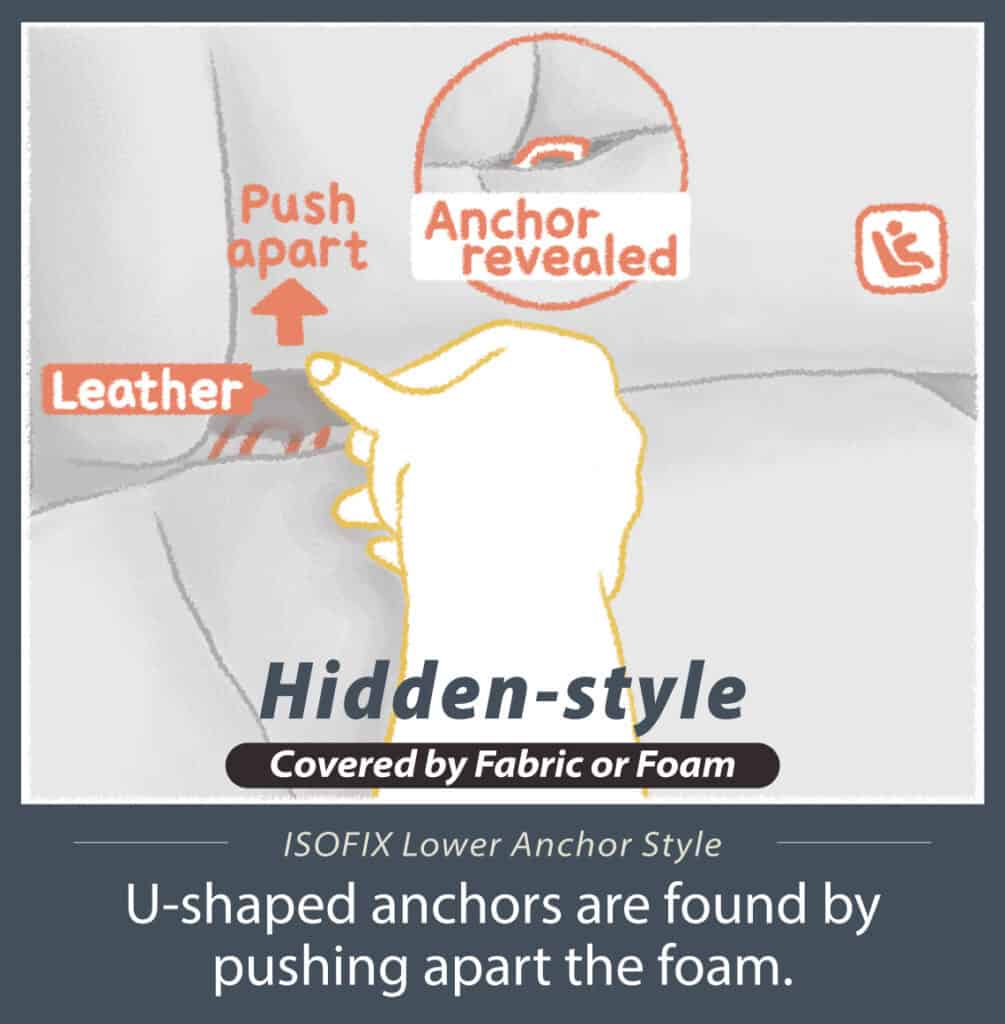Some customers may find it difficult to locate the ISOFIX lower anchors, as the back seat designs can vary. To make things easier, the PERO Team has identified six common ISOFIX lower anchor styles to help you recognize yours quickly.
Common ISOFIX Lower Anchor Styles
ISOFIX styles
ISOFIX lower anchor designs can vary depending on your car’s make and model. Drawing from the PERO team’s extensive experience installing ISOFIX car seats across different vehicles, we’ve identified and named six common types of lower anchors. Use the descriptions and illustrations below to help determine which type your car uses:
Open-style Lower Anchors
This design features exposed anchors with built-in guider making the metal hooks clearly visible. Installation is straightforward—just align the car seat’s ISOFIX connectors with the anchors and click them into place.
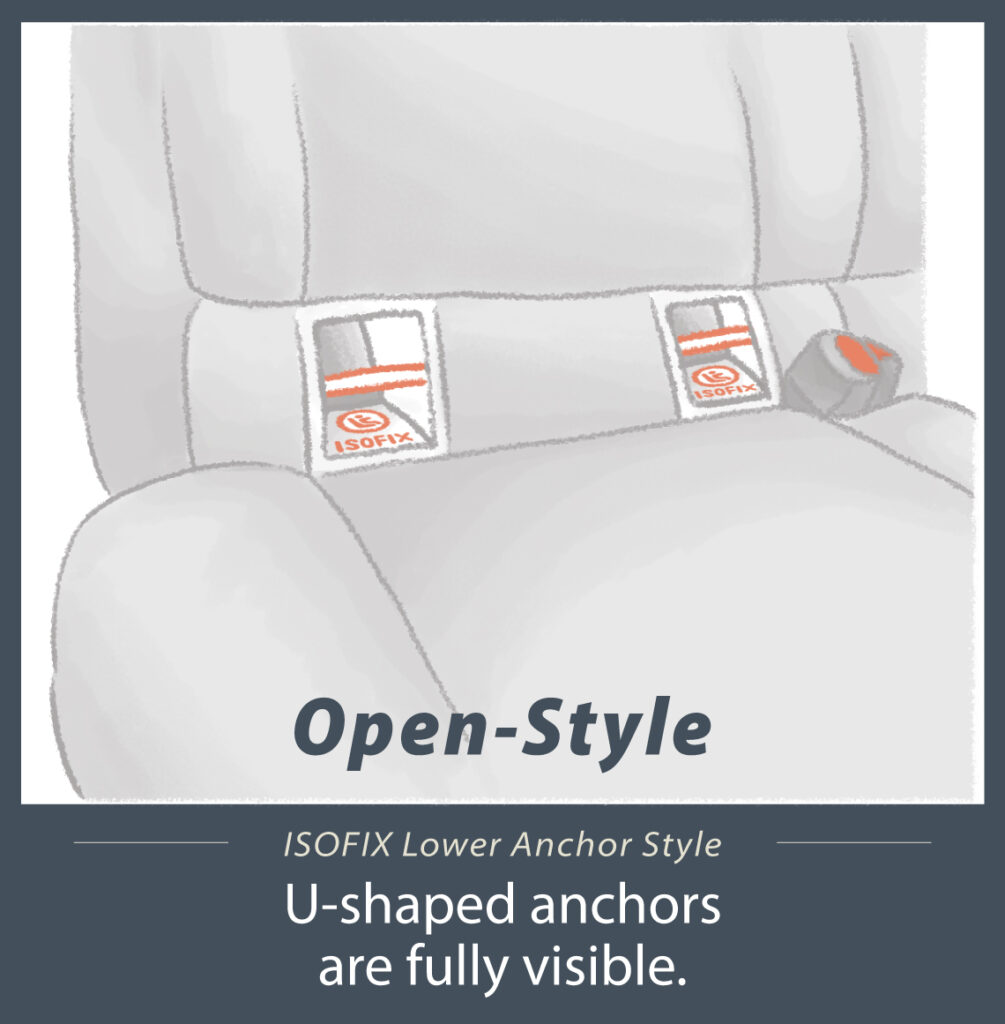
Exposed-Style Lower Anchors
Here, the metal anchors are located close to the seat’s leather upholstery. Part of the anchor is visible, but there are no guiders. Connecting the seat may take slightly longer compared to the Open-Style.
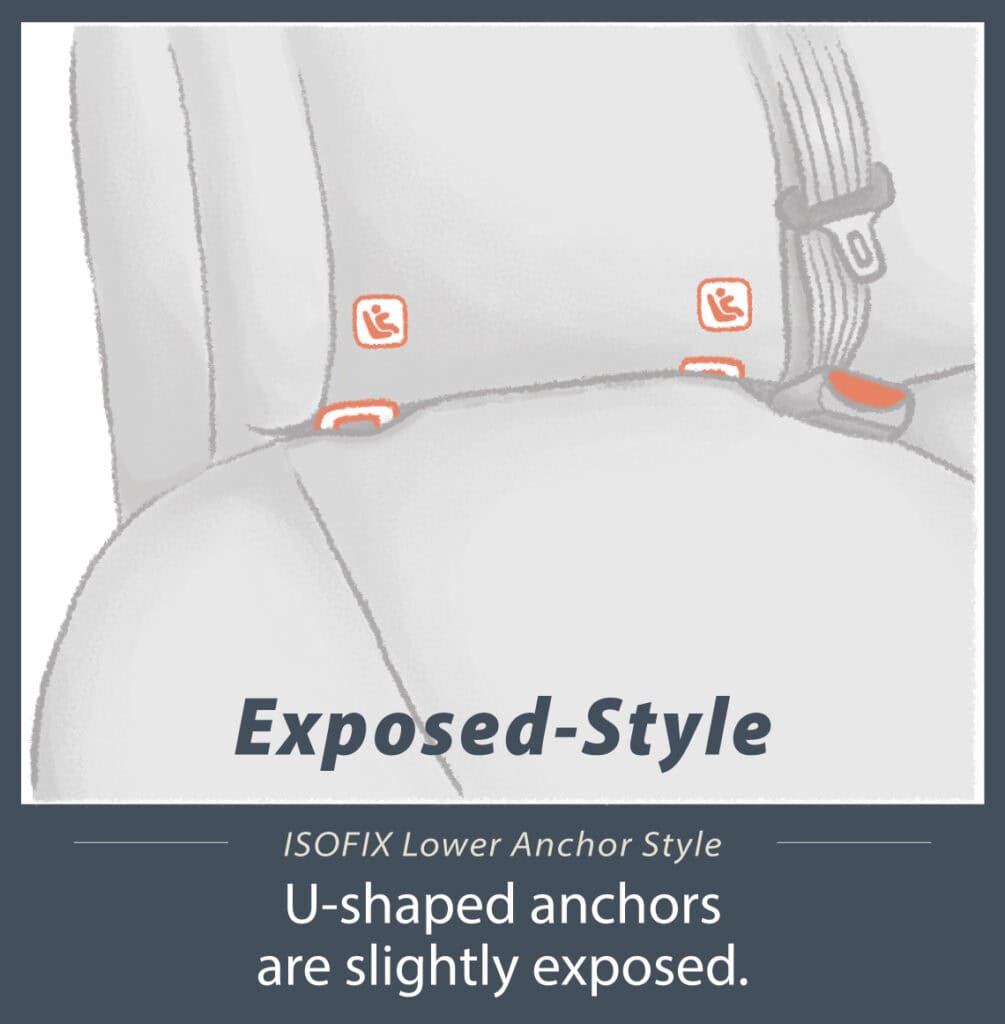
Covered-Style Lower Anchors
Similar to the Open-Style, this style includes guiders but also features a protective cover over the anchors. You’ll need to flip open the cover to access the anchors underneath.
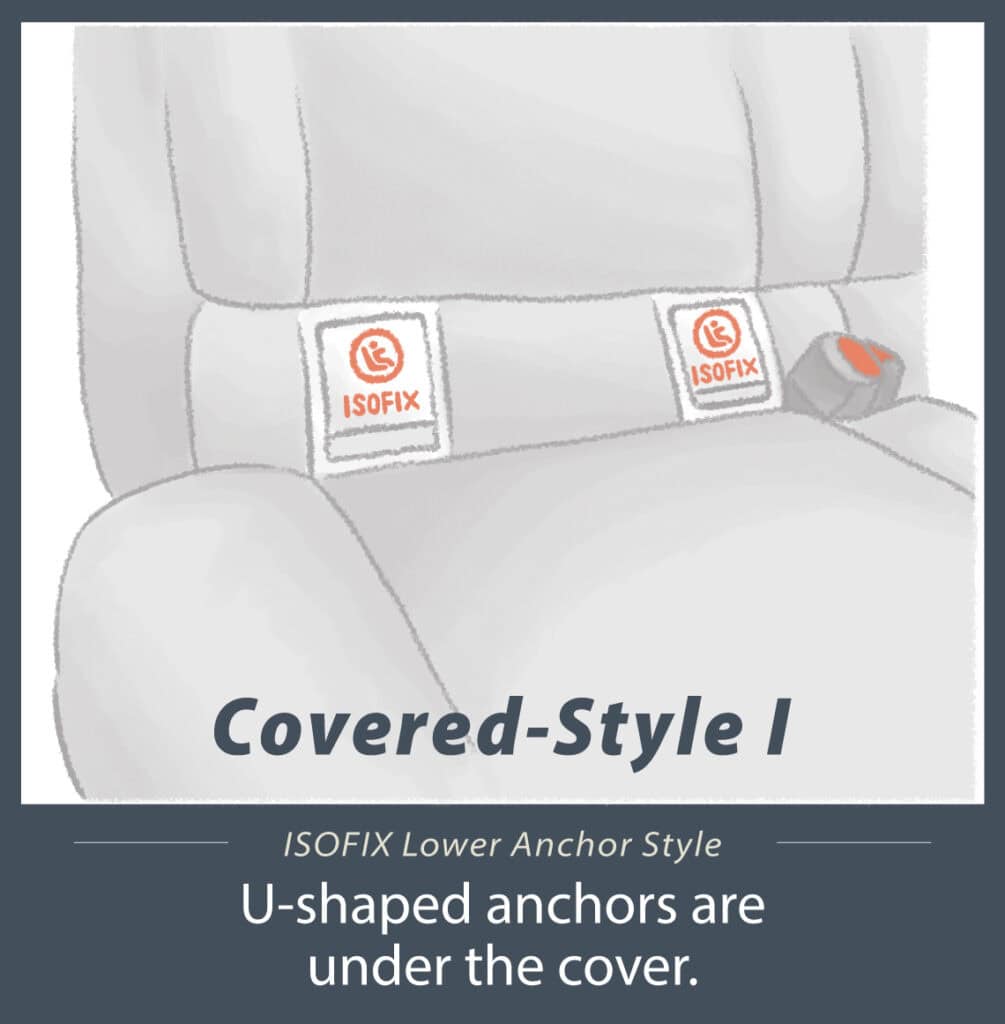
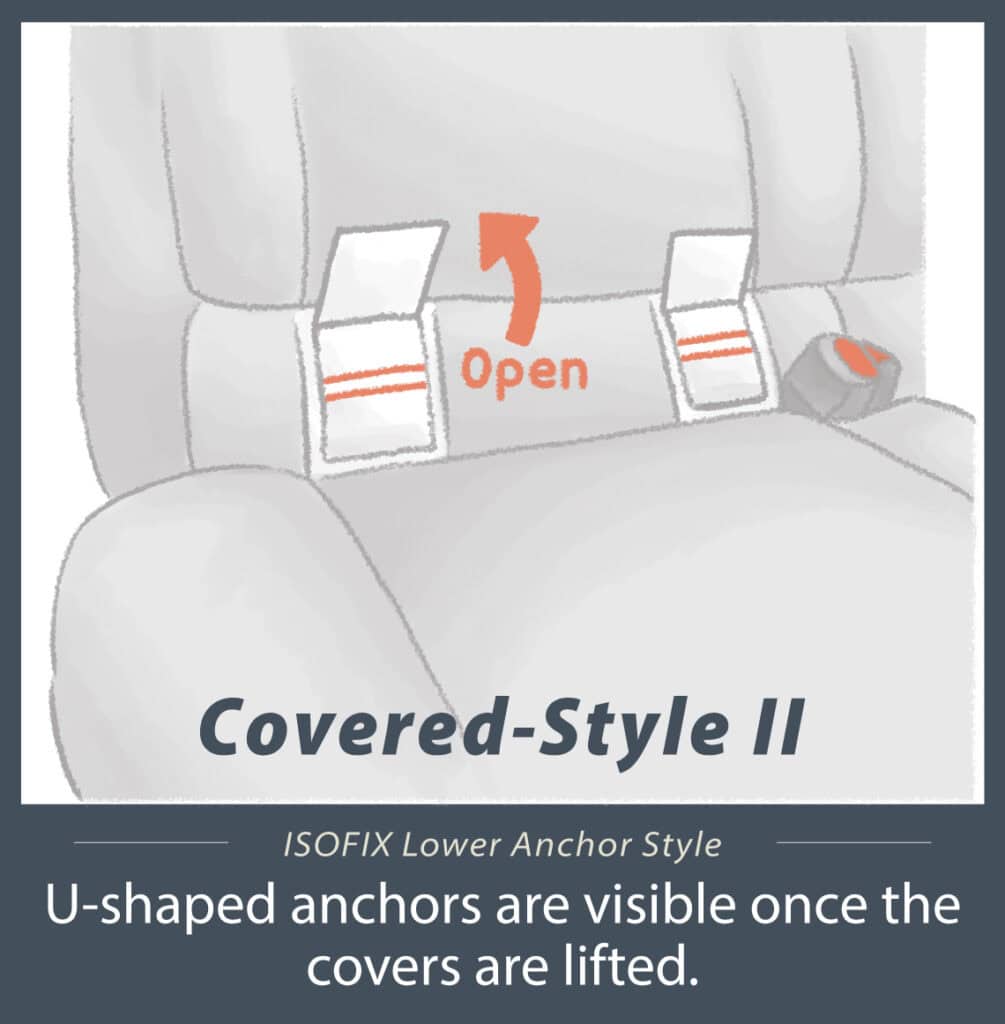
Slit-Style Lower Anchors
Often found at the base of the seatback, this design includes two vertical slits in the upholstery. To access the lower anchors, gently pull apart the slits in the leather.
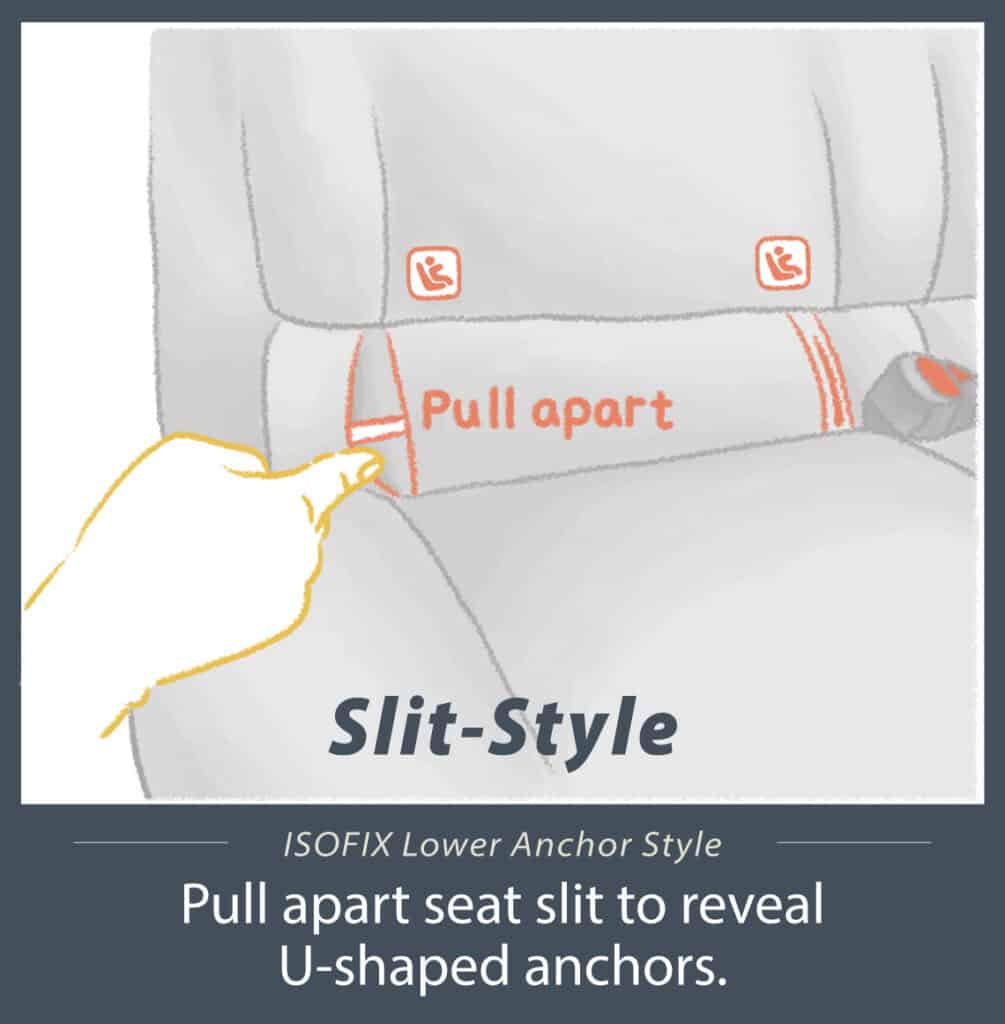
Seat Gap-Style Lower Anchors
In this setup, the anchors are hidden between the seat cushions. A small ISOFIX label may mark their location. However, some vehicles have deeper or lower anchor positions, which can make installation tricky. To find the anchors, you will need to put your fingers in and feel for the anchors. In those cases, the car seat base may not sit flush with the seat cushion.
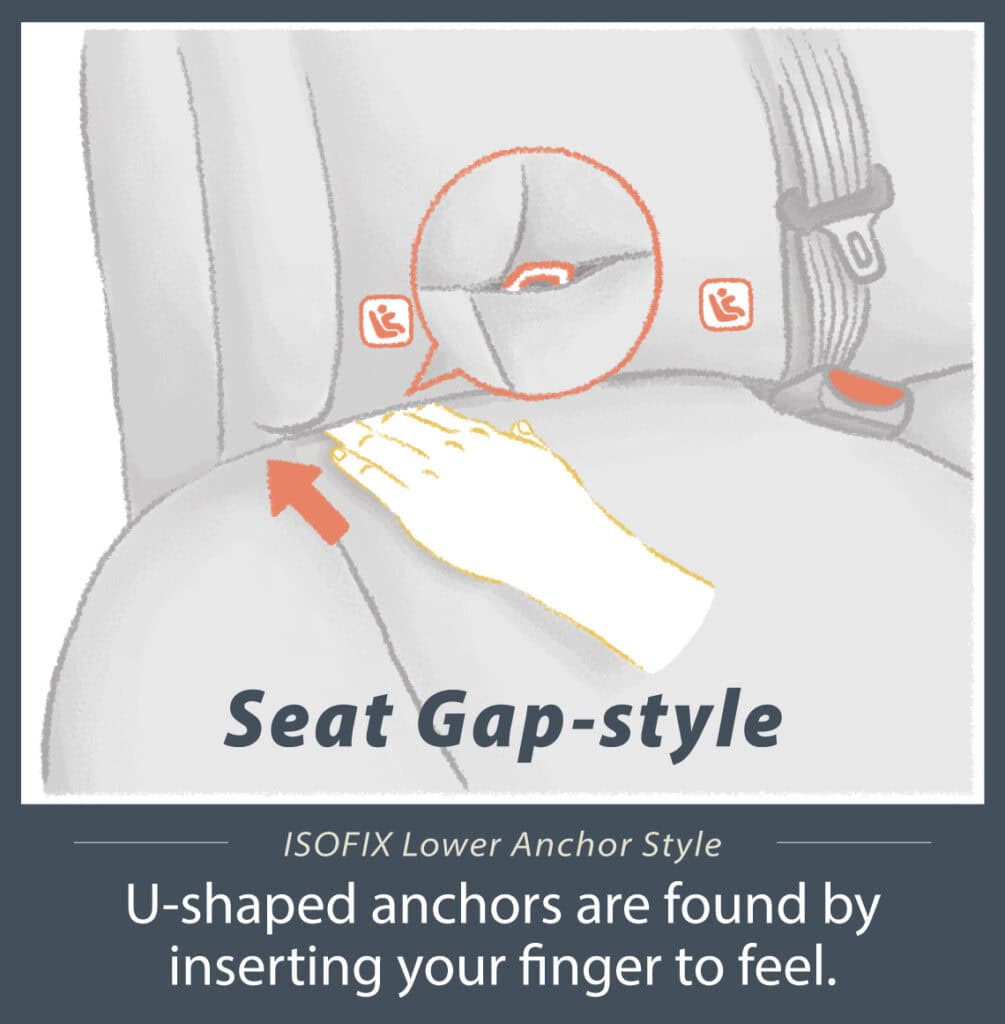
Hidden-Style Lower Anchors (Covered by Fabric or Foam)
This is the most difficult type to work with. The anchors are fully concealed beneath the seat’s fabric or foam. To install a carseat, you’ll first need to locate and uncover the anchors before securing the connectors.
